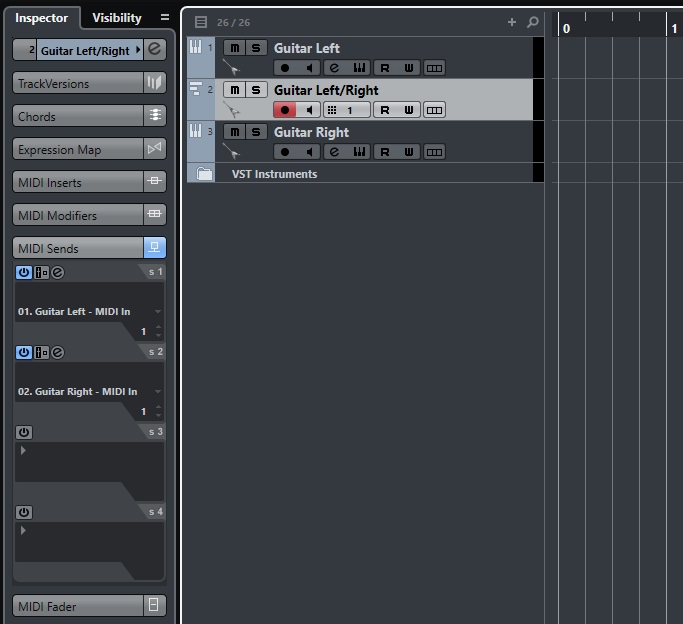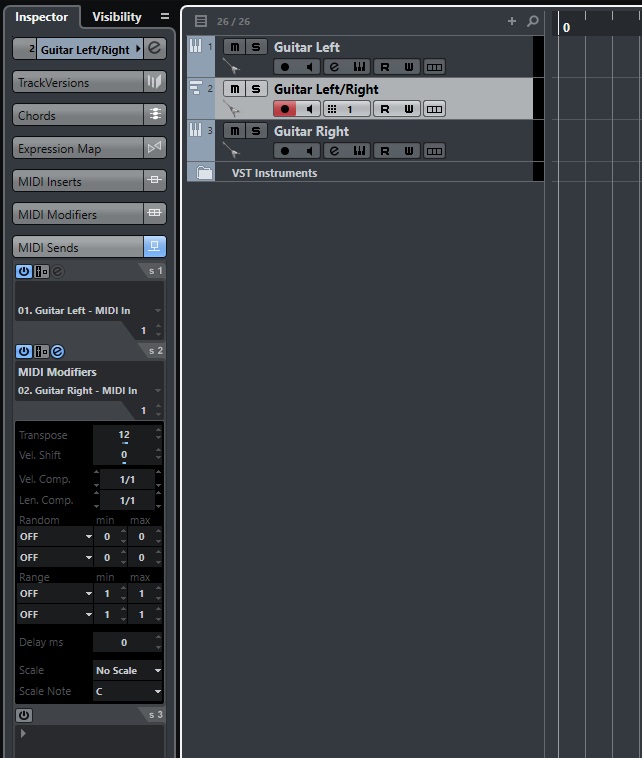A case can be made for always using instrument tracks instead of MIDI tracks + rack instruments in Cubase, except for hardware instruments. While I think instrument tracks do not handle multiple-output instruments well, there is yet another valid use case for using MIDI tracks with software instruments: Instruments that often play the same parts – i.e., instruments that often play in unison.
I say often, because if you want multiple instruments to always play in unison, you can simply use a multi-timbral instrument, and if you want them to occasionally play in unison, you can simply create a shared copy of the part. A very common use case are double-tracked rhythm guitars in metal music.
I assume that you already have set up two instrument tracks (or MIDI tracks + rack instruments) for double-tracking. These are called Guitar Left and Guitar Right. Now you can add an additional MIDI track Guitar Left/Right in between these instrument tracks (or MIDI tracks). In the inspector of the new track, you can then configure the MIDI sends.

You can even insert a MIDI effect before the send. E.g., you could use a MIDI modifier so that one of the instruments would play the part transposed by an octave.

Note that MIDI insert effects in the destination tracks will not be effective for the sent MIDI data.
The advantage of the method described here over shared copies is that you have a better visual indication of which parts are in unison and which are not.

vs.

The disadvantage is that there is the overhead of one more track. Possibly, there is also the disadvantage of using MIDI sends at all, because I have experienced Cubase sometimes unexpectedly disconnecting them. This is or was obviously a bug, but I cannot reliably reproduce it.
Tested with Cubase 9.5.50.
[Total: 0 Average: 0]